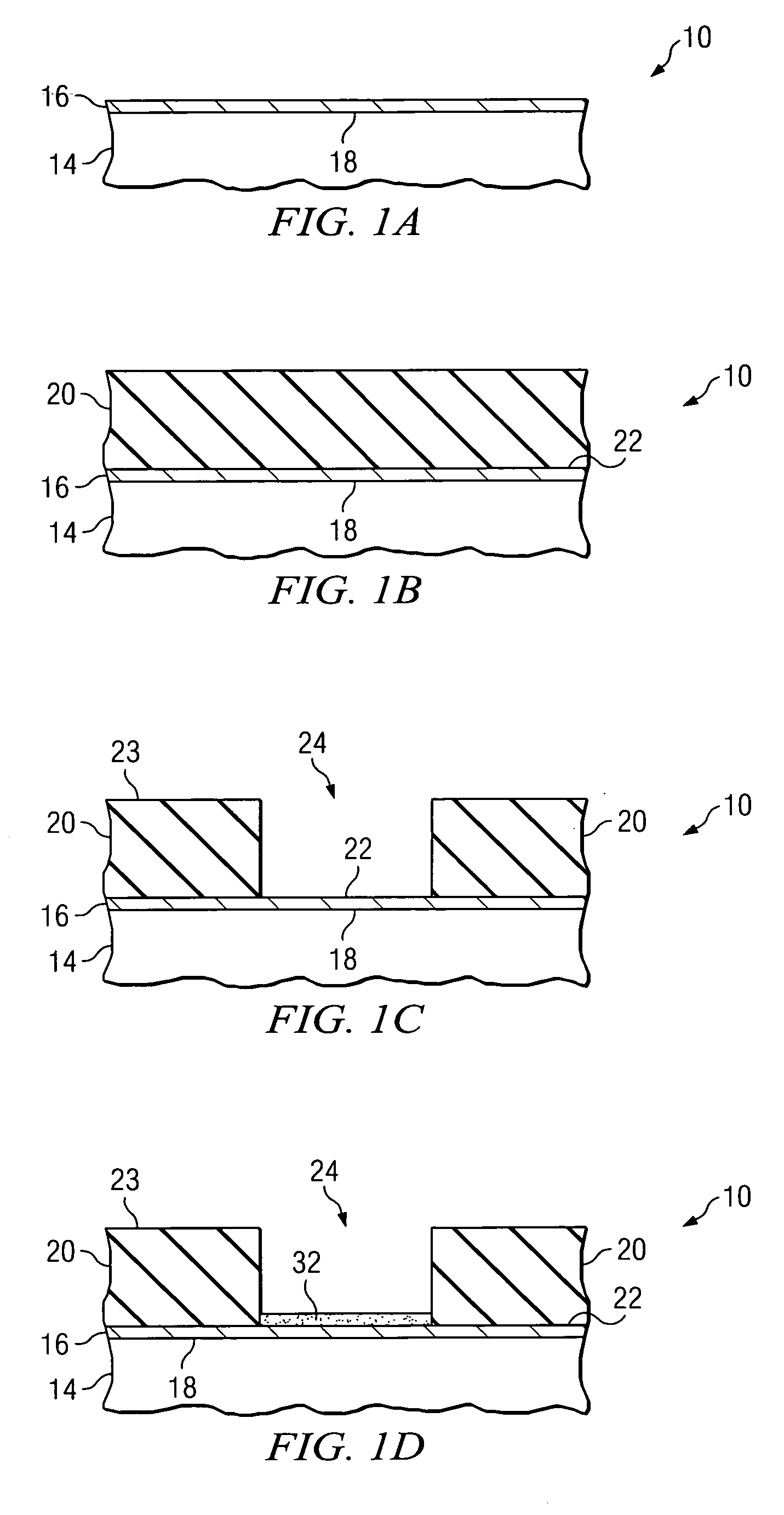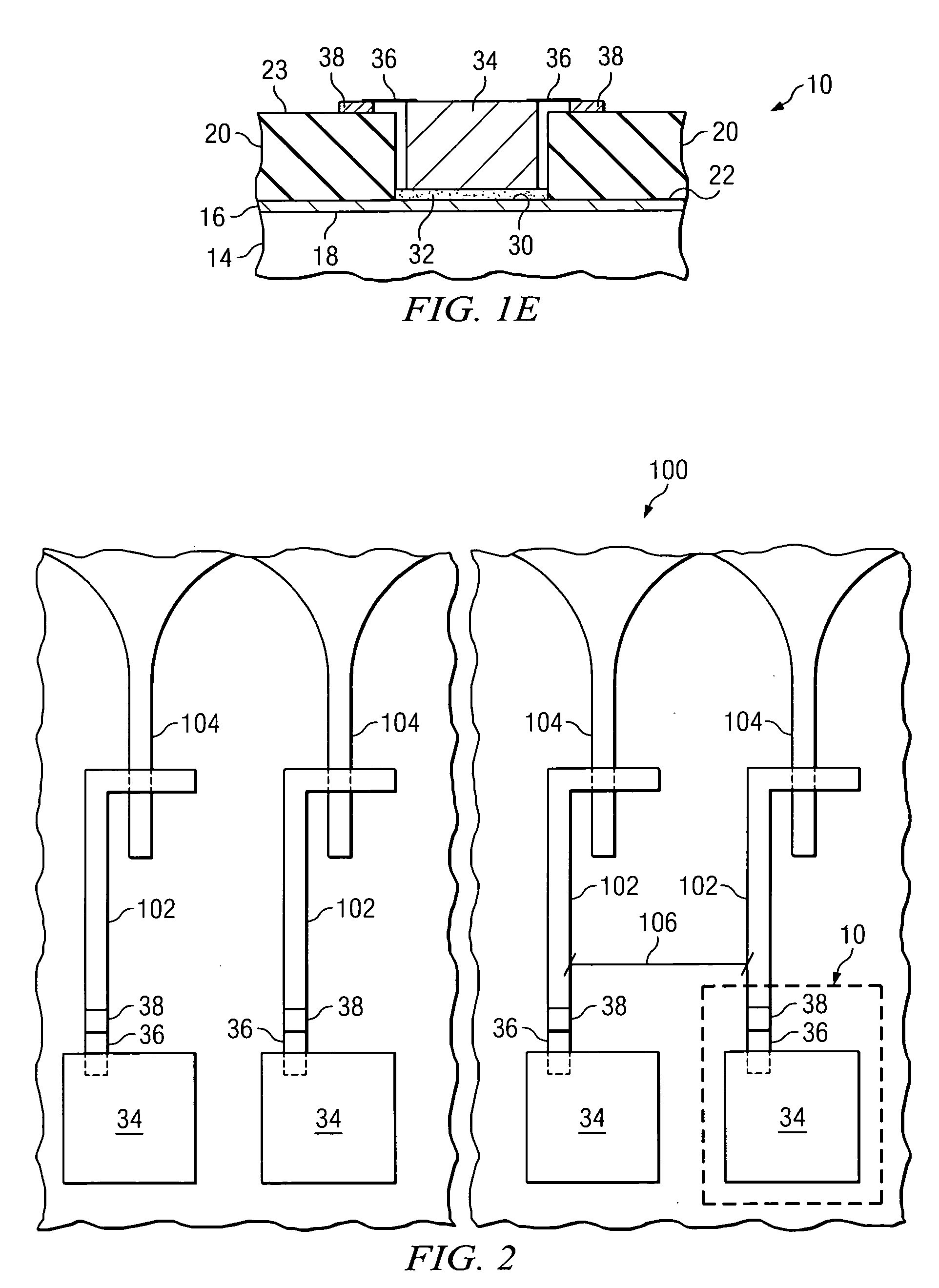Reduced inductance interconnect for enhanced microwave and millimeter-wave systems
a technology of inductance interconnect and microwave, which is applied in the direction of semiconductor devices, semiconductor/solid-state device details, nano-scale devices, etc., can solve the problems of limiting factor, flip chips, and long interconnect coupling of each radiator fin to an integrated circuit, and achieve the effect of reducing the inductance of an interconnect, eliminating or greatly reducing the disadvantages and problems associated
- Summary
- Abstract
- Description
- Claims
- Application Information
AI Technical Summary
Benefits of technology
Problems solved by technology
Method used
Image
Examples
Embodiment Construction
[0012]In order to form a radar system or other microwave or millimeter wave system, various conductive and nonconductive layers are typically formed on a suitable thermal substrate or other non-thermal substrate. FIGS. 1A-1E are cross-sectional views of an example microwave and / or millimeter wave structure (“microwave / millimeter wave structure”) 10 during the formation of multiple layers on an outer surface of a metal layer 14. Semiconductor microwave / millimeter wave structure 10 may be used as a basis for forming any of a variety of microwave / millimeter wave devices, such as a radar system incorporated into a missile or other aerospace platform or other high frequency communication system. Particular examples and dimensions specified throughout this document are intended for exemplary purposes only, and are not intended to limit the scope of the present disclosure. Moreover, the illustrations in FIGS. 1A-1E are not intended to be to scale. As will be discussed in more detail below,...
PUM
 Login to View More
Login to View More Abstract
Description
Claims
Application Information
 Login to View More
Login to View More - R&D
- Intellectual Property
- Life Sciences
- Materials
- Tech Scout
- Unparalleled Data Quality
- Higher Quality Content
- 60% Fewer Hallucinations
Browse by: Latest US Patents, China's latest patents, Technical Efficacy Thesaurus, Application Domain, Technology Topic, Popular Technical Reports.
© 2025 PatSnap. All rights reserved.Legal|Privacy policy|Modern Slavery Act Transparency Statement|Sitemap|About US| Contact US: help@patsnap.com



